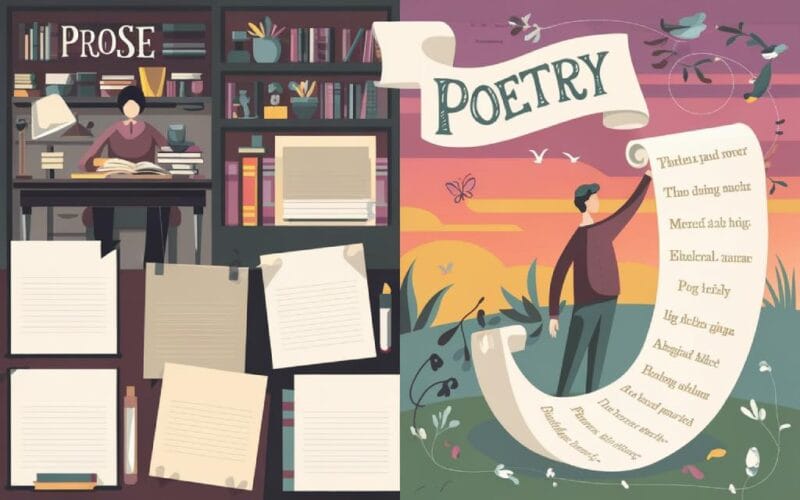Bibliosmia, from the Greek biblio- (book) and -osmia (smell), names the distinctive scent that rises from printed books. It lingers most richly in older volumes or well-used copies, often described as sweet, vanilla-tinged, almond-like, earthy, musty, or smoky. For many readers, this fragrance carries associations of warmth, history, and presence, which is why it is sometimes mistaken for a metaphor for nostalgia.
Strictly defined, bibliosmia is the chemical aroma itself, produced when paper, ink, adhesives, and binding materials undergo gradual transformation and release volatile compounds into the air. It does not describe the attraction or longing for that smell, but the actual smell—that specific aroma that marks the material life of a book as it ages.
The Chemistry of Bibliosmia
The chemistry of bibliosmia reveals that the smell of books is not simply an illusion of memory or imagination but the tangible result of molecular change. As paper, ink, and adhesives age, they release volatile organic compounds that drift into the air and form the familiar aromas we associate with libraries and well-loved volumes. Each note that is sweet, musty, smoky, or vanilla-like emerges from specific chemical reactions that mark the gradual transformation of organic materials into scent.
Volatile Organic Compounds (VOCs) Behind the Scent
Research shows that bibliosmia arises when the compounds in paper, ink, adhesive, and binding degrade over time, emitting volatile organic compounds. Key molecules include:
- Furfural: Produced during acid-catalyzed hydrolysis of cellulose and hemicellulose; gives off a sweet almond- or baked sugar-like smell.
- Acetic acid and formic acid: Produced when cellulose and hemicellulose degrade; contribute tangy, slightly vinegary notes.
- Benzaldehyde: Comes from lignin breakdown; contributes almond-like aroma.
- Vanillin: Also a lignin‐degradation product; gives vanilla sweetness.
- Toluene, ethyl benzene, nonanal, decanal, hexanal: These aldehydes/hydrocarbons add earthy, musty, woody, or even resinous notes depending on age and storage conditions.
- Guaiacol: Arising from lignin oxidation, sometimes giving smoky or spicy undertones.
Role of Paper, Binding, Ink, and Environment
In their 2009 article “Material Degradomics: On the Smell of Old Books,” published in Analytical Chemistry, Matija Strlič and colleagues demonstrated that the aroma of books is shaped by the interaction of paper, inks, adhesives, and environmental conditions. Paper made from wood pulp, rich in lignin and hemicellulose, generates stronger and more varied volatile organic compounds as these components degrade. By contrast, rag papers composed of cotton or linen contain fewer reactive elements, so their scent profile is often milder and more stable over time.
The materials used in printing and binding also play a role, as inks, sizing agents, and glues each release distinct volatiles as they age. Beyond the composition of the book itself, storage conditions accelerate or temper these processes. Heat, humidity, and poor air circulation quicken chemical breakdown, while cooler, drier environments slow it.
In summary, key influences on bibliosmia include:
- Paper composition: Wood-pulp paper emits stronger VOCs as lignin and hemicellulose degrade; rag paper produces subtler aromas.
- Inks, glues, and binding: Adhesives, sizing agents such as rosin or gelatin, and printing inks each add their own volatile compounds.
- Environmental conditions: Temperature, humidity, light, and air circulation shape both the strength and character of the smell; damp and warm storage often leads to more pronounced aromas.
“New Book Smell” vs. “Old Book Smell”
Bibliosmia does not apply only to old books; new books have their own scent profile, though usually subtler or “crisper.” The fresh smell arises from newer inks, sizing, glues, and less degraded paper. Some of the same VOCs appear, though in different proportions, and lignin content is often lower in high-quality modern papers. The contrast between new and old in scent contributes to the richness of bibliosmia as a continuum.
The “new book smell” arises from the release of volatile chemicals used in the manufacturing of fresh paper, ink, and adhesives. In high-quality modern printing, the papers are usually acid-free and contain less lignin, yet compounds such as toluene, ethyl benzene, and freshly cured adhesives contribute a crisp, almost sharp scent. Some describe it as slightly chemical, though still pleasant because it carries associations of novelty, anticipation, and the tactile excitement of opening an untouched copy. The fresh aroma is essentially a reflection of industrial processes still lingering on the materials before they fully settle.
By contrast, the “old book smell” that many associate with bibliosmia is the result of time slowly reshaping organic material. Paper rich in lignin, hemicellulose, and starch undergoes gradual chemical breakdown, releasing vanillin, benzaldehyde, furfural, and other compounds that emit warm notes of vanilla, almond, and baked sugar. These scents mingle with hints of mustiness from environmental exposure, producing a fragrance that suggests history and endurance. Where the new book smell conveys immediacy, the old book smell carries the layered aroma of decades, shaped as much by storage conditions as by the book’s original materials.
Psychological Effect of Bibliosmia
While bibliosmia strictly refers to the smell of books produced by chemical change, the experience of encountering that scent engages the mind as much as the senses. Neuroscience has shown that olfactory signals travel directly to the limbic system, the brain’s center for memory and emotion. This unique wiring explains why the fragrance of paper and ink can so powerfully evoke recollections such as childhood visits to libraries, afternoons in bookshops, or the atmosphere of a favorite study.
Psychologically, bibliosmia functions as a cue that stabilizes mood and reinforces personal identity as a reader. Because smell is processed with such immediacy, it can elicit a sense of comfort and safety, creating emotional grounding in moments of stress or solitude. For many, the scent of books becomes linked with formative experiences of learning, discovery, and imagination, which is why even a faint whiff of old paper can evoke belonging and continuity. Bibliosmia begins as a chemical event, yet it endures in the mind as an anchor for memory and emotion, binding the material presence of books to the psychological fabric of those who cherish them.
Why Bibliosmia Captivates Us
The appeal of bibliosmia lies not only in the fragrance itself but also in the way it gathers the sensory, emotional, and cultural dimensions of reading into a single experience. We already established that smell is one of the most primal senses, wired directly to the regions of the brain that govern memory and emotion. That is precisely the reason why the scent of books can feel so vivid and immediate.
For many readers, the aroma of paper and ink is inseparable from the rituals of browsing a library, opening a newly purchased novel, or revisiting a treasured edition long kept on the shelf. This fusion of chemistry and psychology explains why bibliosmia endures not merely as a technical definition of the book’s aroma but instead as an emblem of what it means to live with books.
The enjoyment of bibliosmia, therefore, stems from these intertwined factors:
- Sensory pleasure: The sweet, vanilla, almond, earthy, or musty notes are often pleasant, especially when balanced. They evoke warmth, history, and texture.
- Nostalgia and memory: Smell has strong links to memory. Many people associate old‐book scents with childhood, libraries, family, or particular moments.
- Tactile and visual conjunctions: Holding the book, turning its aged pages, seeing its wear, and even hearing the faint rustle all enhance the olfactory impression.
- Authenticity and materiality: Bibliosmia reminds us that books are physical objects, made of organic materials, bound by human hands, and surviving time. The physical presence of books provides a richness that is lacking in digital texts.
Bibliosmia in the Age of Digital Reading
The rise of ebooks and digital reading platforms has changed how people engage with texts, yet it has also heightened awareness of bibliosmia. Digital files are weightless and scentless, designed for efficiency and portability, but they lack the sensory presence that physical books embody. Many readers find themselves turning back to printed volumes not only for their tactile qualities but also for the distinctive fragrance that no screen can reproduce. Even in an era of technological convenience, bibliosmia stands as a reminder that books are more than vessels of information—they are material objects with histories that can be smelled, touched, and carried into memory.
Further Reading
What’s That Smell You’re Reading? by Ann Elizabeth Wiener, Science History Institute
On the Science of Bibliosmia: That Enticing Book Smell by Oliver Tearle, Interesting Literature
Why Do Old Books Smell So Good? by Dani Spencer, Electric Literature
Can you judge a book by its odour? by Claire Armitstead, The Guardian




